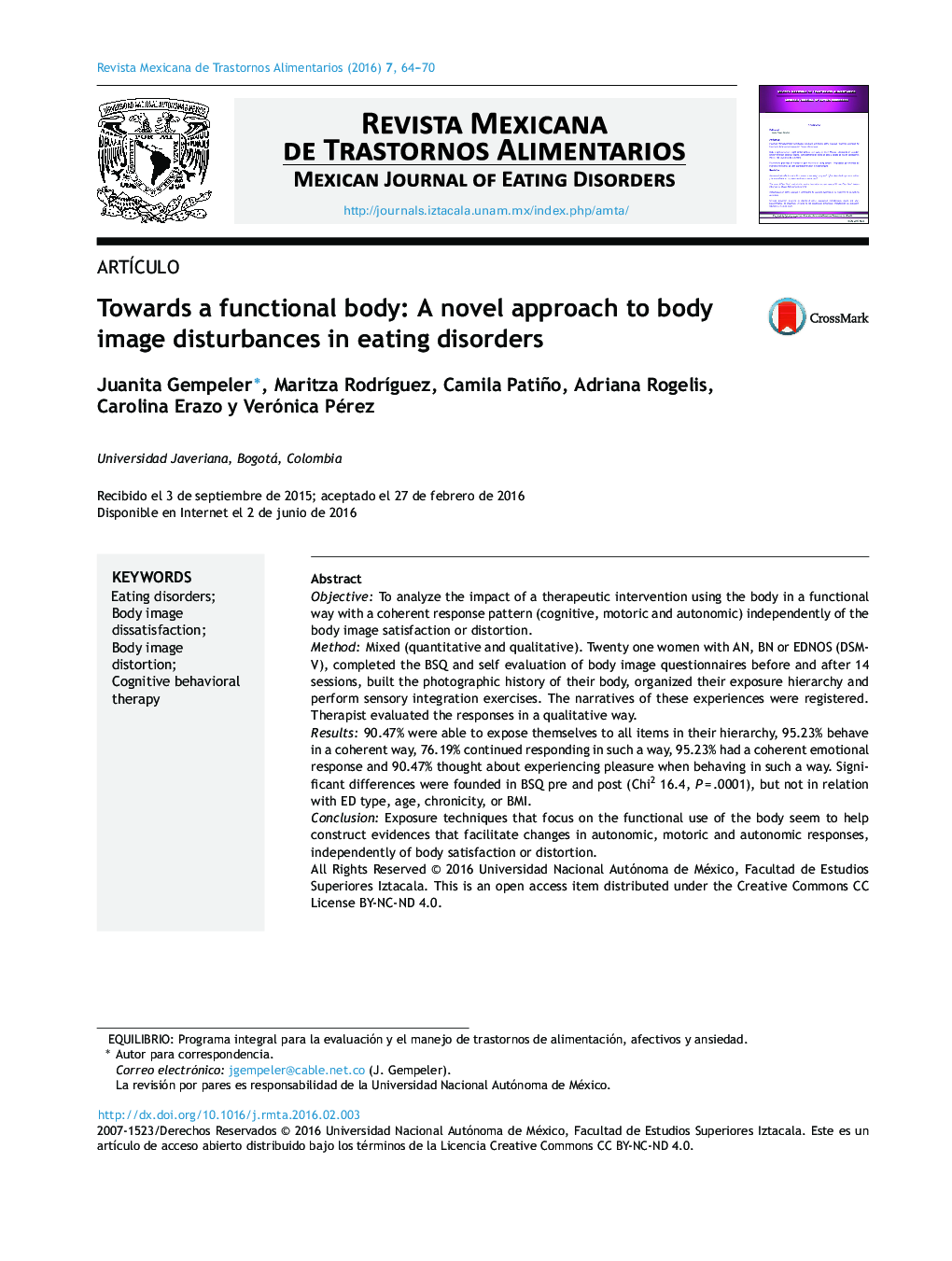| کد مقاله | کد نشریه | سال انتشار | مقاله انگلیسی | نسخه تمام متن |
|---|---|---|---|---|
| 338819 | 1434025 | 2016 | 7 صفحه PDF | دانلود رایگان |
ObjectiveTo analyze the impact of a therapeutic intervention using the body in a functional way with a coherent response pattern (cognitive, motoric and autonomic) independently of the body image satisfaction or distortion.MethodMixed (quantitative and qualitative). Twenty one women with AN, BN or EDNOS (DSM-V), completed the BSQ and self evaluation of body image questionnaires before and after 14 sessions, built the photographic history of their body, organized their exposure hierarchy and perform sensory integration exercises. The narratives of these experiences were registered. Therapist evaluated the responses in a qualitative way.Results90.47% were able to expose themselves to all items in their hierarchy, 95.23% behave in a coherent way, 76.19% continued responding in such a way, 95.23% had a coherent emotional response and 90.47% thought about experiencing pleasure when behaving in such a way. Significant differences were founded in BSQ pre and post (Chi2 16.4, P = .0001), but not in relation with ED type, age, chronicity, or BMI.ConclusionExposure techniques that focus on the functional use of the body seem to help construct evidences that facilitate changes in autonomic, motoric and autonomic responses, independently of body satisfaction or distortion.
ResumenObjetivoAnalizar el impacto de una intervención terapéutica que facilite la utilización del cuerpo de manera funcional, con un patrón coherente de respuestas cognoscitivas, motoras y autónomas, independientemente de la satisfacción o distorsión de la imagen corporal.MétodoMixto (cuantitativo y cualitativo). Veintiún mujeres con anorexia, bulimia o trastornos del comportamiento alimentario no específicos (TCANES, DSM-5) completaron el Body Shape Questionnaire (BSQ) y un Cuestionario de Auto-evaluación de la Imagen Corporal, antes y después de 14 sesiones. Construyeron una biografía corporal usando fotografías, organizaron su jerarquía de exposición y realizaron ejercicios de integración sensorial. Las narraciones de esas experiencias fueron registradas. Los terapeutas evaluaron las respuestas en una forma cualitativa.ResultadosEl 90.47% lograron exponerse a todos los ítems de su jerarquía, el 95.23% se comportaron coherentemente, el 76.19% siguieron emitiendo la respuesta, el 95.23% tuvieron una respuesta emocional acorde y el 90.47% pensaron en disfrutar al emitir la respuesta. Se encontraron diferencias significativas pre y post en el puntaje BSQ (Chi2 16.4, p = 0.0001), pero no con relación al tipo de TCA, edad, cronicidad o IMC.ConclusiónLas técnicas de exposición enfocadas al uso funcional del cuerpo parecen construir evidencias que facilitan el cambio en las respuestas autónomas, motoras y cognoscitivas, independientemente de la distorsión o insatisfacción de la imagen corporal.
Journal: Revista Mexicana de Trastornos Alimentarios - Volume 7, Issue 1, January–June 2016, Pages 64–70
